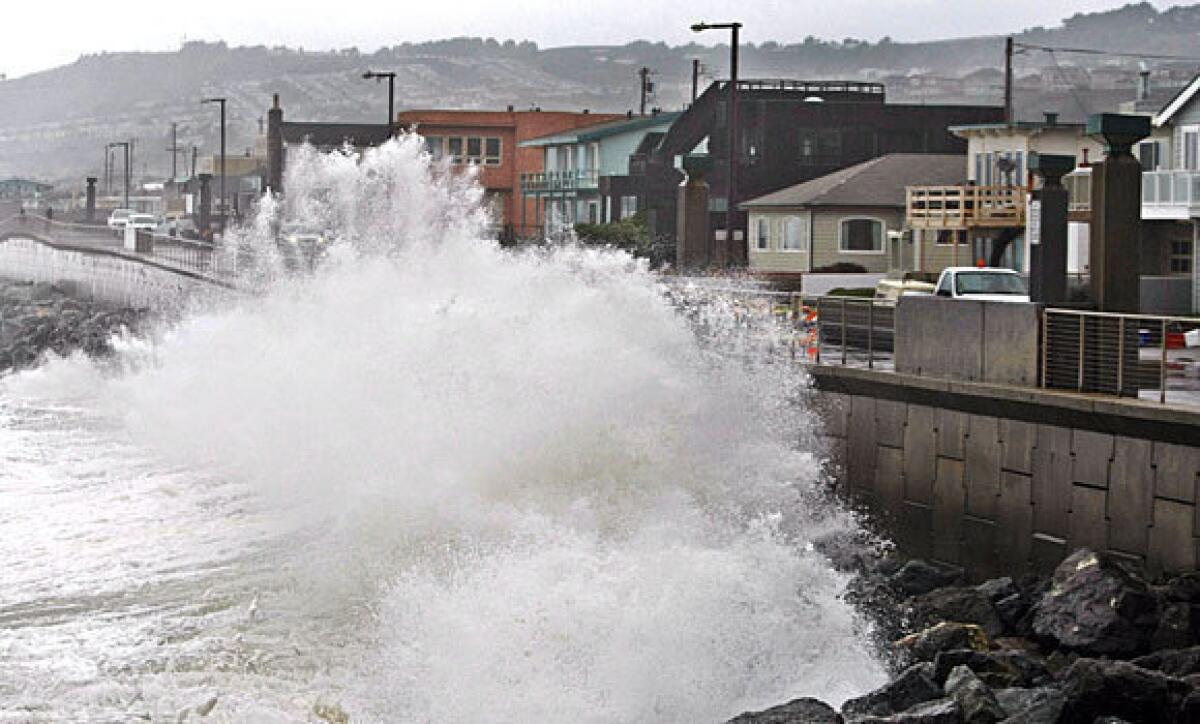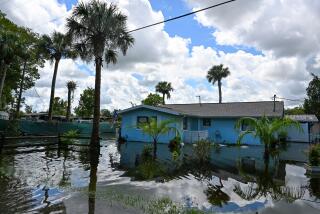Most in U.S. concerned about sea level rise, poll finds

WASHINGTON — An overwhelming majority of Americans is convinced that sea level rise resulting from climate change poses a significant threat to the United States and coastal communities should invest in preparing for the risks, according to a survey released Thursday by Stanford University.
The study was conducted with memories still fresh of Hurricane Sandy’s vast damage and protracted, expensive rebuilding, whose cost was picked up largely by taxpayers.
Although past surveys have asked Americans if they accept climate change to be a global reality, the survey by Stanford’s Woods Institute for the Environment focuses on attitudes about one of its effects — sea level rise — and the options to deal with it. The responses, taken together, indicated that most Americans were no longer willing to accept a hands-off approach to continued coastal development that will get battered repeatedly by rising seas.
“People want preventive action,” said survey director Jon Krosnick, a senior fellow at the institute and a professor of communication, “and few people believe these preparations will harm the economy or eliminate jobs. But people want coastal homeowners and businesses that locate in high-risk areas to pay for these measures.”
Counties along the shoreline, not including in Alaska, make up less than 10% of the country’s total land area. But they are home to 123.3 million people, or 39% of the population. The coastal population is expected to grow by 8%, or 10 million people, by 2020, according to a recent study by the National Oceanic and Atmospheric Administration.
The nationwide poll of 1,200 people found that 82% believe the world’s temperature is rising, and 73% said that the associated sea level rise poses a threat to the United States now and in the future. Nearly three-quarters of respondents said they think sea level rise will worsen storm damage.
Asked whether coastal communities and states should prepare for the effects of sea level rise or, given the unpredictability of weather events, wait to assess the impact, 82% favored advance preparation.
More than two-thirds of respondents said that coastal communities should foot the bill for boosting their defenses against sea level rise. Right now, all taxpayers subsidize flood insurance bought by residents of coastal communities, and then pay billions of dollars in evacuation and cleanup costs.
The survey provided respondents with the pros and cons of a range of common adaptation measures. Some involved building buffers against the sea, such as sea walls or beach replenishment, but only one-third of respondents favored them. Instead, the most popular ideas focused on changing building practices, such as reducing construction on coastlines and beefing up flood protection standards of coastal structures.
“The question is, how does public support for preparation translate to action?” asked Meg Caldwell, executive director of the Center for Ocean Solutions, a Monterey environmental group that cosponsored the survey. “Our impulse is to try to move quickly to put communities back together the way they were after devastation. But that impulse often leads to doubling down on high-risk investments, such as rebuilding in areas likely to experience severe impacts.”
More to Read
Sign up for Essential California
The most important California stories and recommendations in your inbox every morning.
You may occasionally receive promotional content from the Los Angeles Times.











